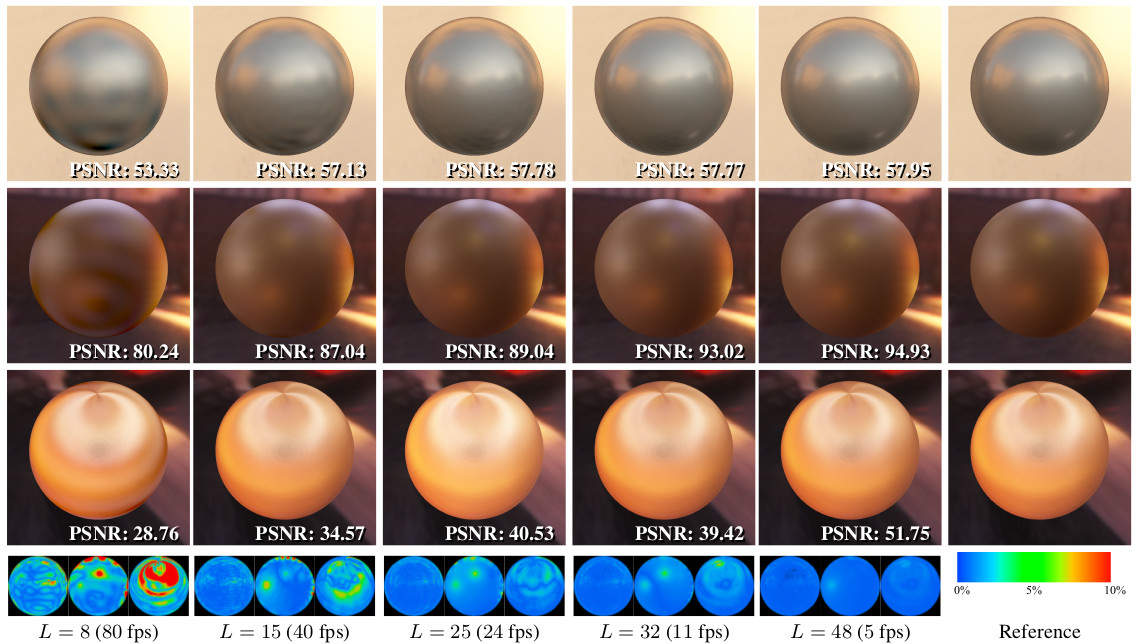Section: New Results
Efficient and Accurate Spherical Kernel Integrals using Isotropic Decomposition
Participant : Cyril Soler [contact] .
|
Spherical filtering is fundamental to many problems in image synthesis, such as computing the reflected light over a surface or anti-aliasing mirror reflections over a pixel. This operation is challenging since the profile of spherical filters (e.g., the view-evaluated BRDF or the geometry-warped pixel footprint, above) typically exhibits both spatial-and rotational-variation at each pixel, precluding precomputed solutions. We accelerate complex spherical filtering tasks using isotropic spherical decomposition (ISD), decomposing spherical filters into a linear combination of simpler isotropic kernels. Our general ISD is flexible to the choice of the isotropic kernels, and we demonstrate practical realizations of ISD on several problems in rendering: shading and prefiltering with spatially-varying BRDFs, anti-aliasing environment mapped mirror reflections, and filtering of noisy reflectance data. Compared to previous basis-space rendering solutions, our shading solution generates ground truth-quality results at interactive rates, avoiding costly reconstruction and large approximation errors. This paper was published in ACM Transactions on Graphics [4] and presented at Siggraph Asia 2015.



